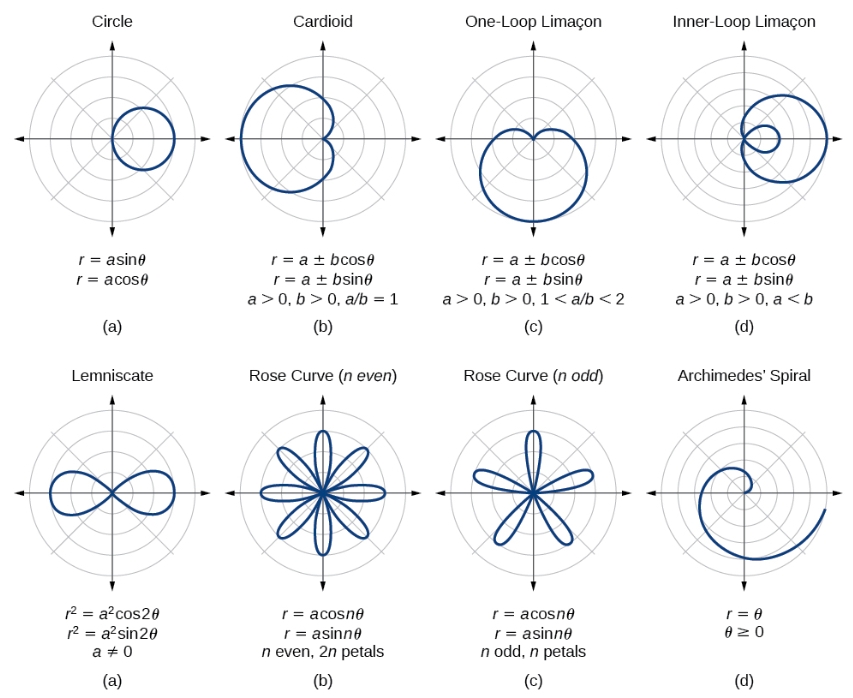Polar Curve Functions (Differential Calc))
Refer to Khan academy: Polar functions derivatives

In the
Polar World, instead of the relationship betweeny & x, the function is now representing the relationship betweenRadius & Angle, which could be presented as:

Finding the right boundaries
Finding the right boundariesThe most tricky part in Polar system, is finding the right boundaries for
θ, and it will be the first step for polar integral as well.
Differentiate Polar Functions
Differentiate Polar FunctionsTaking derivative of Polar function is actually DIFFERENTIATING PARAMETRIC FUNCTION. To take the derivative we need to:
Convert the
Polar functionin terms ofx & y:
Take derivative of the parametric function.
Example
 Solve:
Solve:
Since it's asking for the
Rate of change of y-coordinate, so we convert the polar function torectangular function:
And we take the derivative
dy/dΘ:
Plug in the point
Θ=πand get:
Tangents to Polar curves
Tangents to Polar curvesSteps:
Find the slope
dy/dxConvert the polar function to get the
x(θ)andy(θ)parametric equationsSolve
dy/dxand get the slopePlug in the point's information to solve for
x & yGet the equation of the line (tangent).
Example
 Solve:
Solve:
To find the tangent line, we need to get the slope first, which is
dy/dx.And
dy/dxwould be aparametric problem:
Plug in the Θ value, to evaluate the slope:

Find the
x & yvalue according to the Θ:
Now we got everything to form the equation for the tangent line:


Example
 Solve:
Solve:
First, we need to convert the polar function to
x(θ) & y(θ):
And we need to find the slope
dy/dx:
Since it's a horizontal tangent, so
Slope =0, which meansdy/dx =0. Butdxis dominator can't be zero, so we can setdy = 0and solve for θ:
So the answer is:

Example
 Solve:
Solve:
To find a vertical tangent, we have to set the dominator of the slope as 0, that's the only thing makes it undefined.
The slope is
dy/dx, so we setdx = 0.The equation for
xis:
....
Last updated